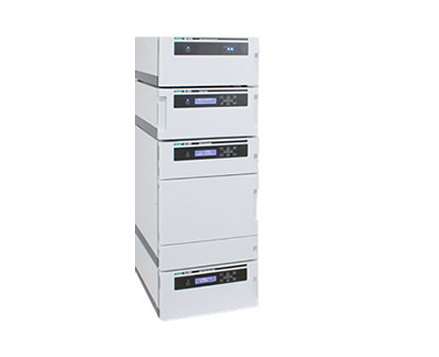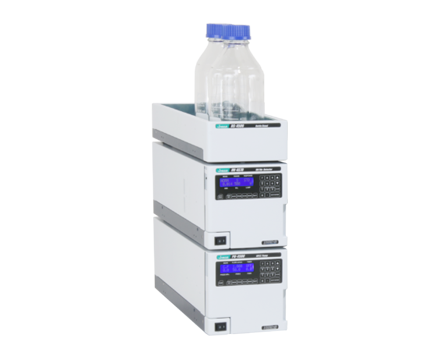Analysis of Cyclodextrines in Green Tea using HPLC-ELSD
August 19, 2022
Introduction
An evaporative light scattering detector (ELSD) is an universal detector for HPLC which detects the scattered light from the particles when illuminated from the non-volatile substance that remains after the sample is sprayed together with N2 gas. LED is used as a light source to illuminate the non-volatile particles, and the light scattered will be collected and converted into the electronic signal by photomultiplier tube. Samples such as sugar and fat which can only be detected at short, noisy UV wavelengths, or by an insensitive, isocratic requiring RI detector can be measured with high sensitivity and stable baseline by ELSD. Cyclodextrine is known as the oligosaccharide with its glucoses being connected in circle. Cyclodextrine is further named as a-Cyclodextrine, b-Cyclodextrine and g-Cyclodextrine for the cases that the number of glucoses becomes 6, 7, or 8. Since the properties and the performance of each are different according to the number of glucoses, the amount of these cyclodextrines will influence the taste of food.
This report describes the analysis of cyclodextrine using ELSD with a polymer NH2 column in HILIC mode.
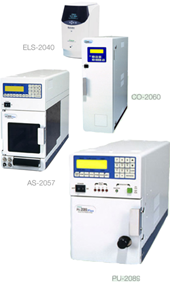
Experimental
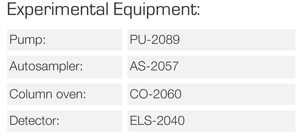
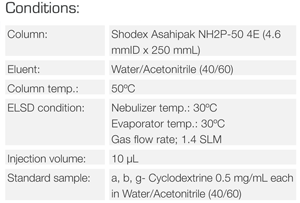
Results
Figure 1 shows the chromatogram of a, b, g-Cyclodextrine.
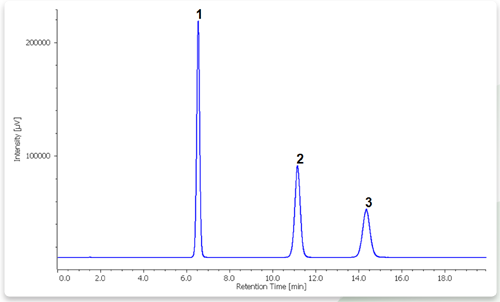
1: a-Cyclodextrine , 2: g-Cyclodextrine , 3: b-Cyclodextrine
Figure 2 shows the chromatogram of green tea mixed with cyclodextrine. All the components were detected with the quantitative result : a-Cyclodextrine 4.5 mg/10mL, b-Cyclodextrine 5.0 mg/10mL, g-Cyclodextrine 22.7 mg/10mL.
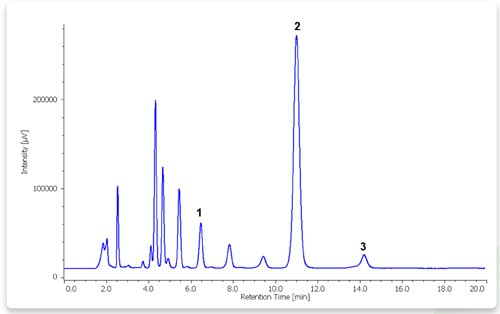
1: a-Cyclodextrine , 2: g-Cyclodextrine , 3: b-Cyclodextrine
Sample preparation: Green tea combined with cyclodextrine was mixed with mobile phase of the same amount and was then sent through a 0.45µm filter.
Featured Products:

Analysis of Cyclodextrines in Green Tea using HPLC-ELSD
Introduction
An evaporative light scattering detector (ELSD) is an universal detector for HPLC which detects the scattered light from the particles when illuminated from the non-volatile substance that remains after the sample is sprayed together with N2 gas. LED is used as a light source to illuminate the non-volatile particles, and the light scattered will be collected and converted into the electronic signal by photomultiplier tube. Samples such as sugar and fat which can only be detected at short, noisy UV wavelengths, or by an insensitive, isocratic requiring RI detector can be measured with high sensitivity and stable baseline by ELSD. Cyclodextrine is known as the oligosaccharide with its glucoses being connected in circle. Cyclodextrine is further named as a-Cyclodextrine, b-Cyclodextrine and g-Cyclodextrine for the cases that the number of glucoses becomes 6, 7, or 8. Since the properties and the performance of each are different according to the number of glucoses, the amount of these cyclodextrines will influence the taste of food.
This report describes the analysis of cyclodextrine using ELSD with a polymer NH2 column in HILIC mode.

Experimental


Results
Figure 1 shows the chromatogram of a, b, g-Cyclodextrine.

1: a-Cyclodextrine , 2: g-Cyclodextrine , 3: b-Cyclodextrine
Figure 2 shows the chromatogram of green tea mixed with cyclodextrine. All the components were detected with the quantitative result : a-Cyclodextrine 4.5 mg/10mL, b-Cyclodextrine 5.0 mg/10mL, g-Cyclodextrine 22.7 mg/10mL.

1: a-Cyclodextrine , 2: g-Cyclodextrine , 3: b-Cyclodextrine
Sample preparation: Green tea combined with cyclodextrine was mixed with mobile phase of the same amount and was then sent through a 0.45µm filter.

 Download This Application
Download This Application